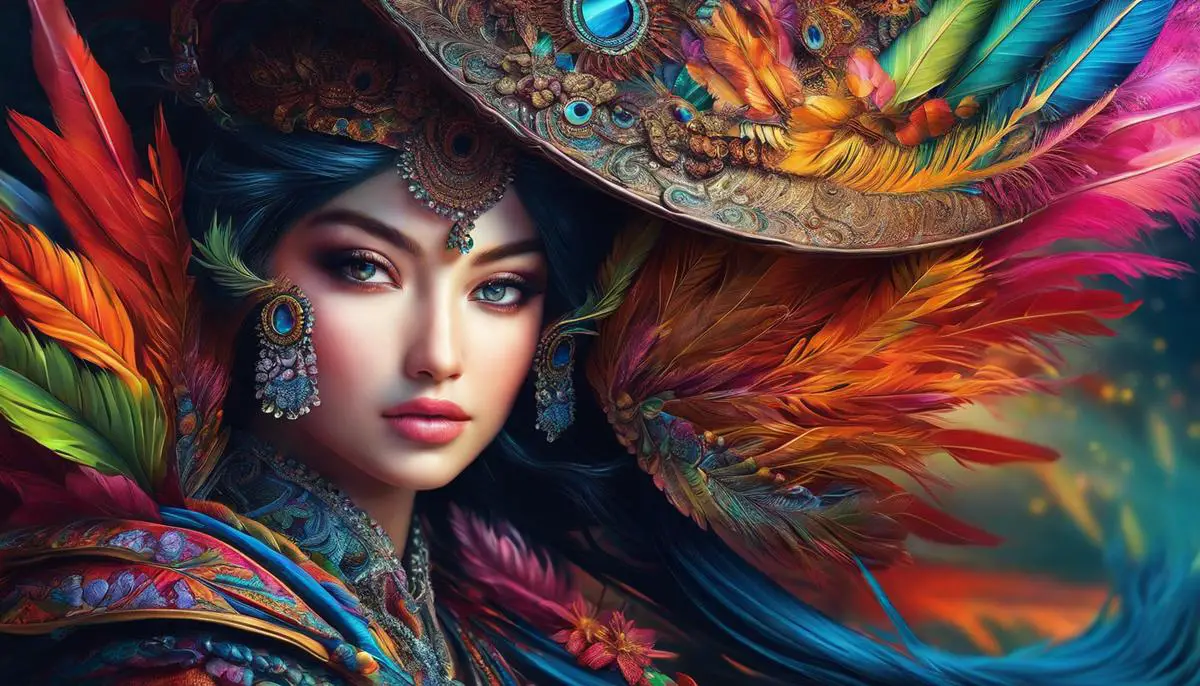As the field of digital art continues to evolve, new technologies emerge that challenge conventional norms and push the boundaries of what’s possible. High-Resolution Image Synthesis is one such transformative technology that has the potential to alter the landscape of digital art profoundly. Enabling the creation of detailed and realistic images, this technology plays a crucial role in propelling digital art into new frontiers. This article delves deep into the concept of High-Resolution Image Synthesis, focuses on its integration in digital art, uncovers its benefits and drawbacks, presents interesting case studies and explores its future trends in the realm of digital art.
Contents
- 1 Understanding High-Resolution Image Synthesis
- 2 Integration of High-Resolution Image Synthesis in Digital Art
- 3 Benefits and Drawbacks of High-Resolution Image Synthesis in Digital Art
- 4 Case Studies Exploring High-Resolution Image Synthesis
- 5 Future Trends of High-Resolution Image Synthesis in Digital Art
Understanding High-Resolution Image Synthesis
Right at the forefront of the latest tech innovations in the world of artificial intelligence, sits the concept of High-Resolution Image Synthesis.
It’s a fascinating development that holds immense potential in various fields from entertainment and advertising to healthcare and scientific research.
But what is it, exactly? And more importantly, how does it work? Let’s take a deep dive.
High-Resolution Image Synthesis refers to the use of artificial intelligence algorithms to generate highly-detailed, high-quality images.
Simply put, it’s the process of teaching a machine to create pictures that are so good, they’re nearly (or sometimes completely) indistinguishable from photographs taken in the real world.
This technology has the power to change how we create content, imagine new designs, and visualize data.
Remember when AI used to produce blocky, poor quality images? We’ve come a long way since then.
Now, we feed computers an array of pictures, and through a learning process called Deep Learning, they can create strikingly realistic images.
The underlying principle of this technology hinges on Generative Adversarial Networks, often referred to simply as GANs.
GANs are essentially two AI systems pitted against each other, in a fierce yet friendly competition.
One AI, referred to as the “generator,” creates new images.
The other AI, aptly named the “discriminator,” checks these images against real ones to assess their authenticity.
Through this heavy-weight match up, the generator gets progressively better at creating convincing images, driven by the goal of fooling the discriminator.
The higher the resolution, the more detailed the image, and the more computing power required to generate it.
This was a significant obstacle that plagued previous algorithms.
However, thanks to recent developments in machine learning and AI technology, modern systems have shown increasing efficiency in this process, even when it comes to creating high-resolution images.
The latest entrant to this field was introduced by NVIDIA, whose StyleGAN2 has remedied many flaws of its forerunner.
This new algorithm not only generates hyper-realistic faces but is also capable of creating objects, animals, and even fictional characters, thus revolutionizing the graphic design and digital art industries.
The vast potential of High-Resolution Image Synthesis is not limited to creating realistic images.
It extends into visualizing complex data or simulating real-world scenarios for research and development purposes.
The healthcare field can utilize it to generate images of disease progression, while the automotive industry can exploit it for the creation of scenario simulations for autonomous vehicles.
High-Resolution Image Synthesis exemplifies the astounding power of modern-day AI.
Despite the strides made, it’s only the tip of the iceberg.
The possibilities are awe-inspiring and, frankly, pretty exciting.
As GANs get better and AI technology continues to evolve, there is no limit to what might be achieved.
For those keeping an eagle eye on the tech horizon, the future holds many fascinating prospects.
Buckle up, it’s going to be an exhilarating ride.
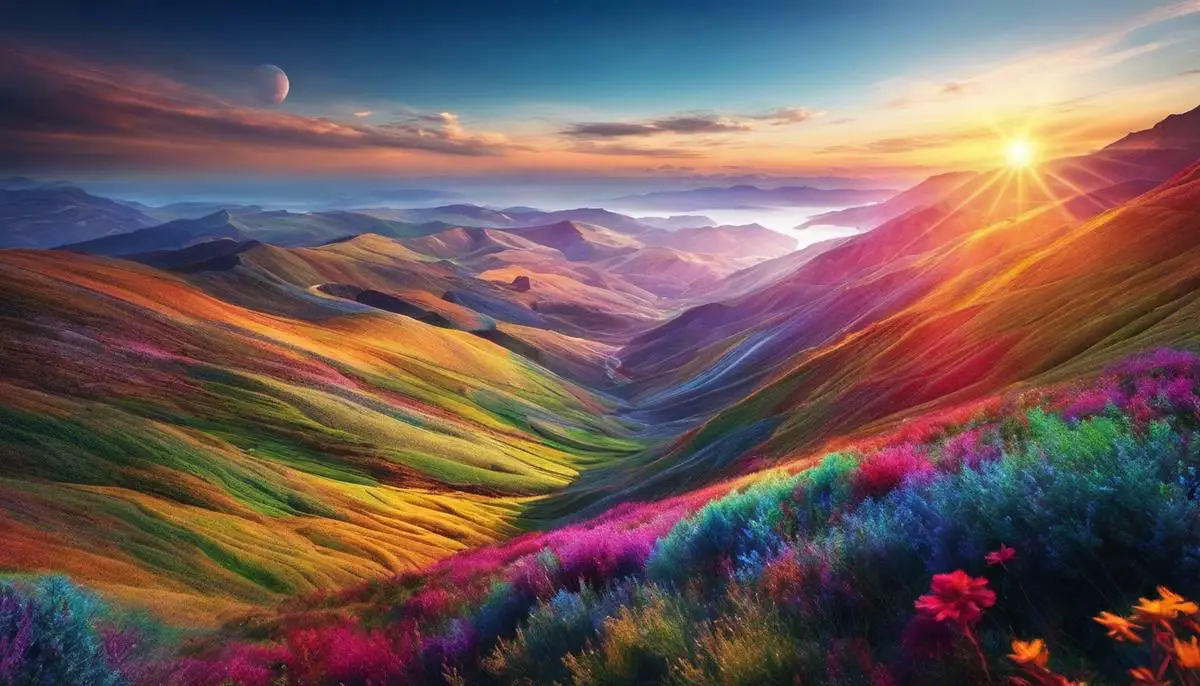
Integration of High-Resolution Image Synthesis in Digital Art
High-Resolution Image Synthesis (HRIS) carries substantial implications for the field of digital art, where visual precision and unmatched creativity intersect. Simply imagine, instead of laboring for hours, days, or weeks on a single digitally hand-drawn piece, artists harness the cutting-edge capabilities of HRIS to create breathtaking, high-resolution images in mere minutes. Here’s how this revolutionary technology is rewriting the rules of digital creativity.
At the heart of this transformation lies the generative power of AI. By taking advantage of neural networks invigorated by deep learning techniques, the AI can enhance or even recreate the visual content with almost brain-like creativity. Mind you, the results are not just sharper images, but entirely new artwork, often surpassing the complexity that human artists can achieve single-handedly.
Central to the fast-paced progress of HRIS is its close bond with GANs (Generative Adversarial Networks), showcasing the prowess of contemporary AI. NVIDIA’s groundbreaking StyleGAN2 stands as an example, one that astounds even the most seasoned tech enthusiasts. This construct, a product of GAN advancements, crafts artworks that are visually striking, moving, and incredibly detailed. In essence, it’s like having an uber-intelligent digital assistant that never runs out of artistic flair.
But where HRIS shows the most promise in digital art is its near limitless scope. As digital artists, we no longer are confined by physical constraints; we can visualize complex data, simulate scenarios, and extrapolate beyond the mundane. You can explore the unfathomable depths of space or the intricate neural network of the human brain—all made possible through the artistic lens of HRIS integrated with AI.
We’re talking about a future where digital art will play a fundamental part, ushering in a new epoch of imaginative exploration. High-Resolution Image Synthesis is not just improving existing art; it is forging new pathways, expanding horizons, and redefining the very concept of digital artistry, one pixel at a time.
We can’t underscore enough the potential this unassuming yet mindboggling tech harbors. From promising improvements in entertainment and advertising to making significant strides in healthcare and scientific research, HRIS is as promising as it is transformative. As technology enthusiasts, we must watch with bated breath as this revolution unfurls, and continually strive to shape and harness its potential.
Despite reaching impressive heights, we’re still only scratching the surface of HRIS’s potential. With the relentless pace at which deep learning and AI algorithms are evolving, the future beholds unimaginable wonders. HRIS takes the helm as we sail forward, moving into an era where our capability to create will only be bounded by our imagination. The world of digital art is about to witness a remarkable transformation, fostering a remodeled landscape that we’ve till now only dared to dream. Fasten your virtual seatbelts, the revolution has just begun!
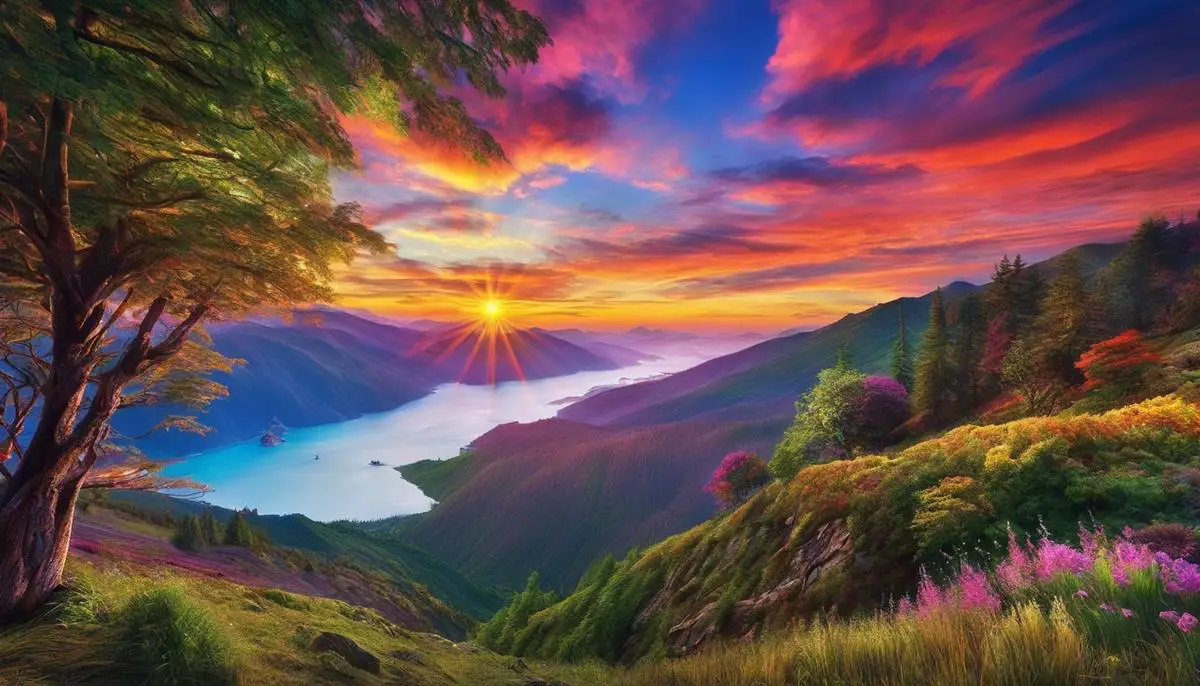
Benefits and Drawbacks of High-Resolution Image Synthesis in Digital Art
Advantages and Disadvantages of High-Resolution Image Synthesis in Digital Art
At the meeting point of technology and art, the green light illuminates the term “High-Resolution Image Synthesis” or HRIS. A tech-driven innovation, HRIS wielded by artists, engineers, and researchers alike, serves as palette and canvas, extending the boundaries of visual creation.
Few can ignore the myriad of advantages offered by HRIS. A tech enthusiast gets transported to a world where images replicate reality and creativity unfurls without limitation. Details, accuracy, and precision are the pillars upon which HRIS stands, promising artists a new spectrum for artistic expression.
HRIS boosts the pace of the artistic creation process. Unlike traditional media that require hours of painstaking work, HRIS places expressive and captivating visuals at the fingertips of digital artisans, swiftly and effortlessly. Besides, HRIS libraries constructed from massive data sets, preclude the necessity for original content procurement, thus accelerating project timelines.
However, as we delve deeper into this technology, the flipside surfaces, shedding light on the drawbacks of HRIS. The sophistication of the technology pushes the requirements for computational resources to a high plateau. Consequently, artists need access to cutting-edge hardware, such as advanced GPUs or cloud-based platforms, potentially burdening them with added expenditure.
The learning curve associated with mastering HRIS algorithms is yet another put-off. This area, teeming with complex concepts, artificial intelligence, deep learning algorithms, and neural networks, can pose substantial challenges to beginners.
Another significant concern revolves around authorship and originality. Given the technology’s knack for creating synthetic images that closely mimic human creativity, the line defining the ownership and authenticity of digital works blurs. Consequently, this may become a hotbed for issues pertaining to copyright infringement and plagiarism.
Additionally, armed with the power to reproduce reality, HRIS becomes a tool of misinformation amplification. Manipulated images circulating on social platforms contribute to the spread of false narratives, thus exacerbating the already growing menace of digital misinformation and deepfakes.
Despite these drawbacks, it’s important to remember that every sunrise obscures some stars. As with any technology, a balance must be struck to harness the undeniable potential of HRIS while keeping a vigilant eye on its pitfalls. We find ourselves on the brink of a new horizon where the artistry meets automation in an elegantly orchestrated dance. The onus now falls on us to shape the future of this intriguing intermingling, ensuring that HRIS operates within our collective best interests while stimulating artistic ingenuity.
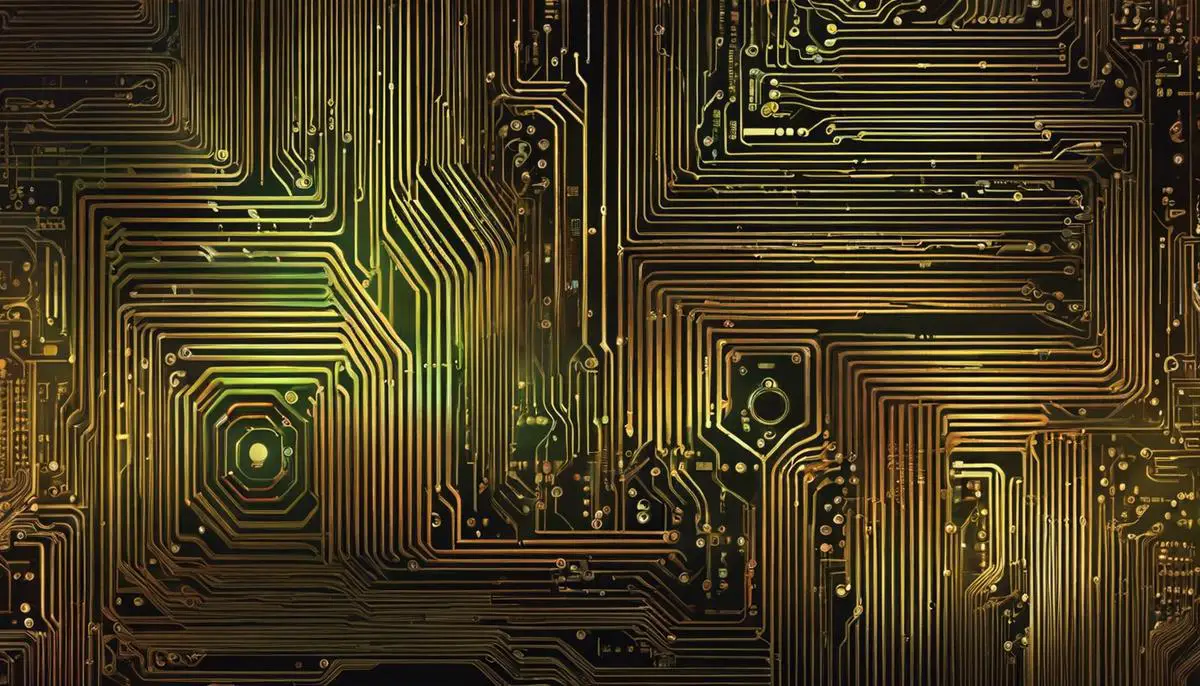
Case Studies Exploring High-Resolution Image Synthesis
As we dive deeper into the world of High-Resolution Image Synthesis (HRIS), it’s fascinating to witness the transformative changes it’s bringing to digital art. Understanding the real-life implications of HRIS involves exploring both its astonishing advantages and potential drawbacks.
Technological enthusiasts will love how HRIS accelerates the creative process in digital art. Traditionally, crafting highly detailed and realistic images by hand is a painstakingly slow process, often taking weeks or even months to complete. HRIS, however, leverages computer algorithms to automate and speed up this process, allowing artists to turn their visions into stunning works of art more quickly.
One stellar advantage of HRIS is access to vast libraries of pre-existing content. This wealth of resources enables artists to glean inspiration and use elements from an array of digital art pieces. It’s like having the world’s largest collection of virtual art supplies at your fingertips!
Furthermore, the accuracy and precision of visuals rendered using HRIS are unparalleled. Whether recreating the subtle shadows on a human face or the intricate patterns in a spiraling galaxy, HRIS can meticulously capture the minutest details. This capability can elevate digital art to dizzying new heights, allowing for a greater degree of realism and visual appeal.
Conversely, HRIS technology is not without its challenges. The computational horsepower required to power HRIS algorithms is substantial. It needs advanced hardware, considerable processing power, and ample storage to function at its peak. In addition, mastering the complex algorithms and techniques of HRIS can be daunting. These requirements may potentially barricade hobbyist artists and small-scale digital businesses from using HRIS.
Equally pressing are ethical concerns surrounding HRIS. In an era where originality is highly prized, HRIS calls into question issues of authorship and authenticity. It can be harder to determine the true creator when high-definition images can be synthesized by AI. Moreover, the potential for copyright infringement and plagiarism rises with AI creating images based on existing art databases.
More alarming is the possibility of HRIS being exploited to create deepfakes and spread misinformation. As the technology for creating realistic images becomes more accessible, it also becomes easier for bad actors to manipulate visual content for malicious purposes. Therefore, regulating use and promoting ethical standards must be an integral part of HRIS development and application.
The goal is to strike a prudent balance; optimizing the power of HRIS while mitigating its potential pitfalls. Like any game-changing technology, its future will be shaped by how ethical guidelines, legal frameworks, and user practices evolve alongside it.
Incontestably, HRIS is set to redefine the landscape of digital art. As those passionate about technology, let’s stay updated, contribute to its responsible development, and anticipate the amazing transformations it will usher in.

Future Trends of High-Resolution Image Synthesis in Digital Art
Advancements on the horizon for High-Resolution Image Synthesis
High-Resolution Image Synthesis (HRIS) is widely acknowledged for lending an artistic edge to the creation of visual content. Enabled by the processing power of AI algorithms, HRIS has initiated an unprecedented acceleration in the pace of artistic productions. The results are detailed, accurate, and visually stunning pieces that only enrich our appreciation of digital art.
Moreover, HRIS also grants heightened access to libraries of pre-existing content. Artists now can manipulate and incorporate this inherited content into their digital artwork, exhibiting an unmatched level of creative freedom and endless possibilities.
However, it is essential to acknowledge the other side of this coin. The use of this technology doesn’t come without its challenges, primarily due to its high computational and hardware requirements. Grasping its algorithms means taking a deep dive into the sophisticated world of artificial intelligence, making the learning curve steep and complex.
Another unsettling thought accompanies this technology, the blurred lines surrounding authorship and originality. Using pre-existing content raises questions about originality, artist credit, and could potentially lead to copyright infringement or plagiarism.
Even more alarming is the use of HRIS in creating deepfakes. An undesirable offshoot of AI advancements, deepfakes represent a grave misuse of the unique elements HRIS brings to the table, strengthening the hand of those seeking to disseminate manipulated visuals and misinformation.
Given its complexities, harnessing the power of HRIS must be a balanced act. Mitigation strategies need to be in place to deal with the possible pitfalls of this technology. Stricter regulation and promotion of ethical standards should be an integral part of this emerging field.
The game-changing impact of HRIS in digital art is here to stay, driven by its potential to create surreal, near-perfect visuals. However, it’s on us to shape its use carefully and responsibly. Even as we marvel at the endless possibilities, caution must be the watchword for this rapidly evolving technology. With a keen eye on the potential and prudent handling of its complexity, HRIS will undoubtedly continue to transform the realms of digital art, entertainment, advertising, healthcare, and scientific research.
Embracing High-Resolution Image Synthesis signals more than just a technological advancement, it’s a journey into a future where imagination is only limited by computation. It is a reflection of our society’s evolving relationship with digital technology as artists, creators, and consumers. It’s a fascinating portrayal of how the line between reality and artificial algorithm-produced imagery continues to blur. And in the process, it redefines, and will continue to redefine, our understanding of creative potential. High-Resolution Image Synthesis not only holds the key to the aesthetic future of digital art but indeed shapes its ethical paradigm as well.
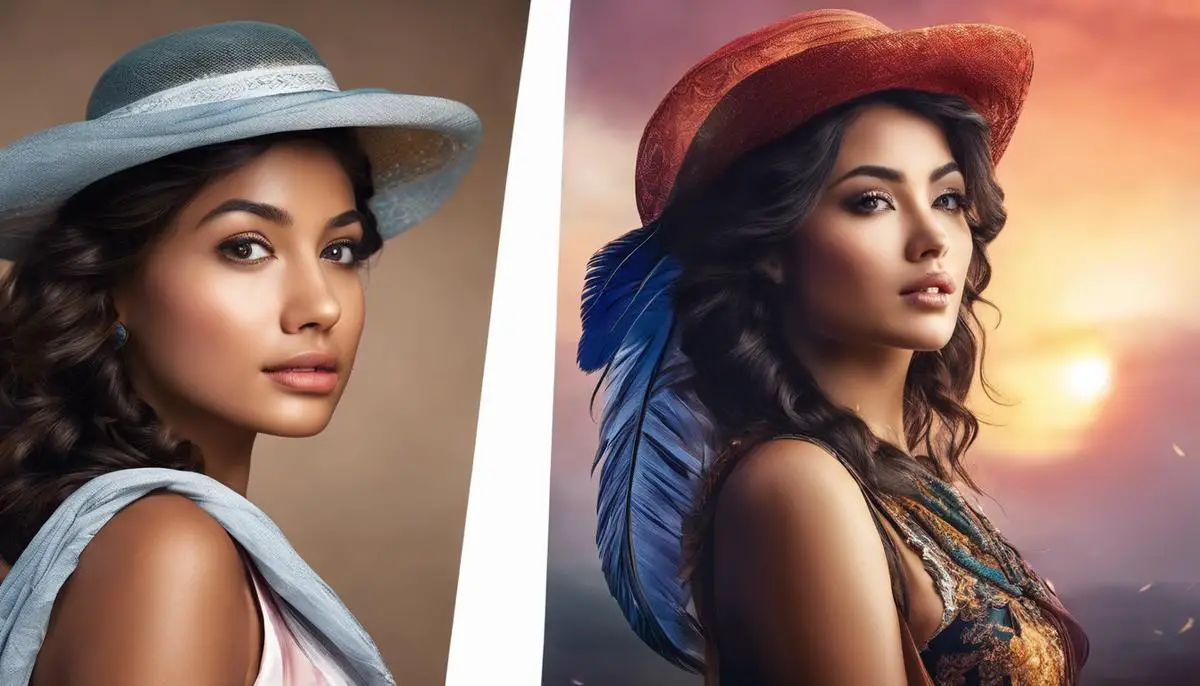
High-Resolution Image Synthesis has indisputably revolutionized the field of digital art, broadening the scope for artists and enhancing the viewing experience for the audience. Its potential remains largely untapped and as artists continue to experiment and innovate, the future of digital art is likely to be shaped by its evolution. While negative impacts and challenges will always accompany new technology, the prowess of High-Resolution Image Synthesis far outweighs the associated drawbacks. Forward-thinking artists, ambitious innovators, and curious audience members have plenty to look forward to as this technology redefines the contours and potential of digital art.

Emad Morpheus is a tech enthusiast with a unique flair for AI and art. Backed by a Computer Science background, he dove into the captivating world of AI-driven image generation five years ago. Since then, he has been honing his skills and sharing his insights on AI art creation through his blog posts. Outside his tech-art sphere, Emad enjoys photography, hiking, and piano.
